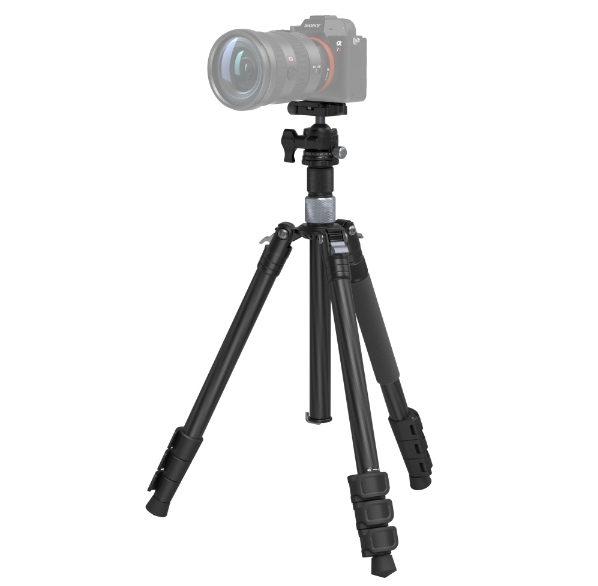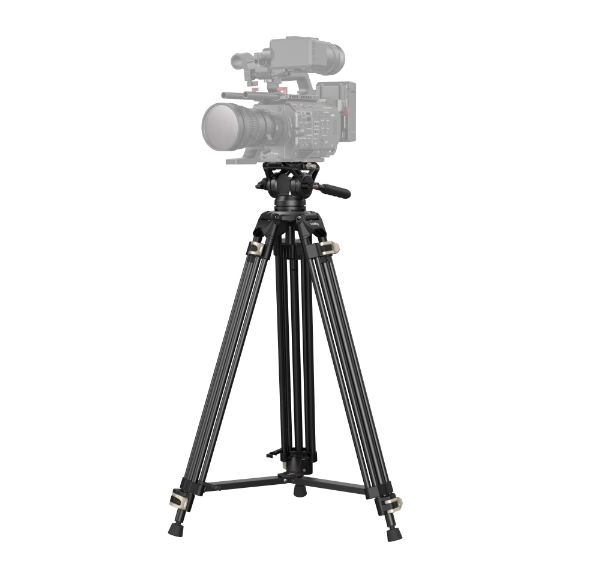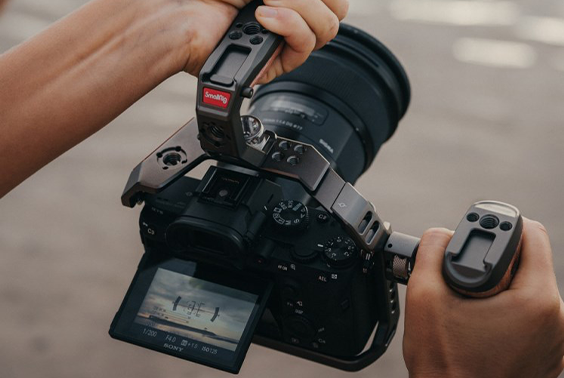Carbon Fiber vs. Aluminum Camera Tripods: Features, Advantages, and More
When you're on the video creation journey, choosing the appropriate tripod facilitates stable and professional-grade visuals. When deciding, a dilemma is choosing between a carbon fiber and an aluminum tripod.
For example, carbon fiber tripods are celebrated for their strength-to-weight ratio and vibration absorption characteristics. These are necessary for achieving undistorted and smooth footage. Conversely, aluminum tripods are naturally robust and cost-effective and deliver steadfast reliability, chiefly in static and controlled environments. In this article, we'll take you through the advantages of each of these two camera tripods to help you better choose the right photography accessory!

Carbon Fiber Tripods
First of all, a carbon fiber tripod is one of the most popular camera tripods among photography enthusiasts. Let's explore the strengths and features associated with carbon fiber tripods.
- Lighter and Portability
When considering carbon fiber tripods, consider the material science contributing to their lightweight nature and portability. Carbon fiber composites consist of carbon filaments woven into a matrix. The design promotes a high strength-to-weight ratio. It confirms that the tripod maintains structural integrity while expediting ease of transportation.
- Vibration Dampening
Carbon fiber, with its anisotropic properties, enables better absorption and dissipation of vibrational energies. It ensures a reduced transmission of shutter or mirror-induced vibrations to the camera sensor.
For example, when shooting in windy weather or on an unstable slope, a carbon fiber tripod prevents vibration deformation, thus maintaining the clarity and stability of the captured image.
- Resistance to Temperature Variations
Carbon fiber tripods exhibit resistance to fluctuations in temperature thanks to their low thermal conductivity and expansion coefficients. They keep structural and operational stability across temperatures, so consistent stability in varied climatic conditions is ensured.
Suppose you are shooting in extreme conditions, even the icy landscapes of Antarctica or the scorching deserts of the Sahara. In that case, a carbon fiber tripod will show unshaken for your uncompromised equipment and photographic pursuits.

Aluminum Alloy Tripods
With the general understanding of carbon fiber tripods, now it’s time to discover the strengths and features associated with aluminum tripods.
- Stiffer and More Rigid
Aluminum Alloy Tripods fundamentally offer a higher stiffness-to-weight ratio due to the material properties of aluminum alloys. It renders them more effective at dampening vibrations, which provides a steadier platform for equipment like cameras and telescopes.
- Greater Load Capacity
Regarding supporting heavier equipment, aluminum tripods stand out owing to their higher load capacity. The mechanical strength and density of aluminum allow it to handle considerable weight without conceding structural integrity.
In a broadcasting setup where a heavy camera and teleprompter are used, an aluminum tripod certifies that the equipment remains stable and secure throughout the operation while abating equipment toppling or instability.
- Resistance to Environmental Factors
Aluminum tripods resist environmental factors like corrosion, temperature variations, and ultraviolet (UV) exposure. It is attributable to aluminum's natural oxidation process to form a protective oxide layer that shields the material from harsh conditions. Practically, you can use an aluminum alloy tripod in diverse settings—be it a humid rainforest or a sandy desert—without wear and tear.

SmallRig's Carbon Fiber & Aluminum Alloy Tripods
Carbon fiber tripod and aluminum alloy tripod are both common and reliable components for camera users. In this section, we'd like to introduce SmallRig's bestselling camera tripods to content creators.
- SmallRig Carbon Fiber Tripod with Center Column AP-20 4059
The SmallRig Carbon Fiber Tripod AP-20 4059 weighs only 1.2kg, with a 12kg load capacity, and easily transitions between a tripod and monopod. All four of his legs are foldable, folding down to just 40cm, making it the perfect match for traveling shoots.
As a result, it accelerates versatile shooting scenarios. Its Arca-Swiss quick-release plate and adjustable center column render it appropriate for dynamic photography and videography, so stability and multi-angle shooting precision are ensured.

- SmallRig Heavy-Duty Fluid Head Tripod AD-01 3751
For videographers using DJI RS2/RS 3/RS 3 Pro stabilizers, SmallRig's Heavy-Duty Fluid Head Tripod AD-01 3751 offers a dual-mode quick-release plate for unified transitions between equipment. The hydraulic head features a quick release, tilt mounting, camera placement in less than 1 second, and front-to-back adjustments to secure.
As a professional video tripod, SmallRig Heavy-Duty Fluid Head Tripod AD-01 3751 has a fluid head, built-in damping, and balancing that allows precise 360° horizontal and +90°/-75° vertical movements, which helps elevate your shot stability and composition.

Conclusion
Carbon fiber and aluminum alloy tripods are both important accessories for shooting. They enhance stability, clarity, and compositional uniqueness in extreme conditions. Understanding the different types of tripods available can help you choose the right one for your needs.
At SmallRig, we cater to your cinematographic pursuits with a range of professional video tripods and camera accessories. Our products include not only tripods for cameras but also phone rigs, stabilizers, and camera power solutions.
Pick your ideal partner for your camera today! Carbon fiber and aluminum alloy camera tripods, what's your best choice?
 Exploring Camera Accessories to Elevate Video Production Quality
Exploring Camera Accessories to Elevate Video Production Quality












